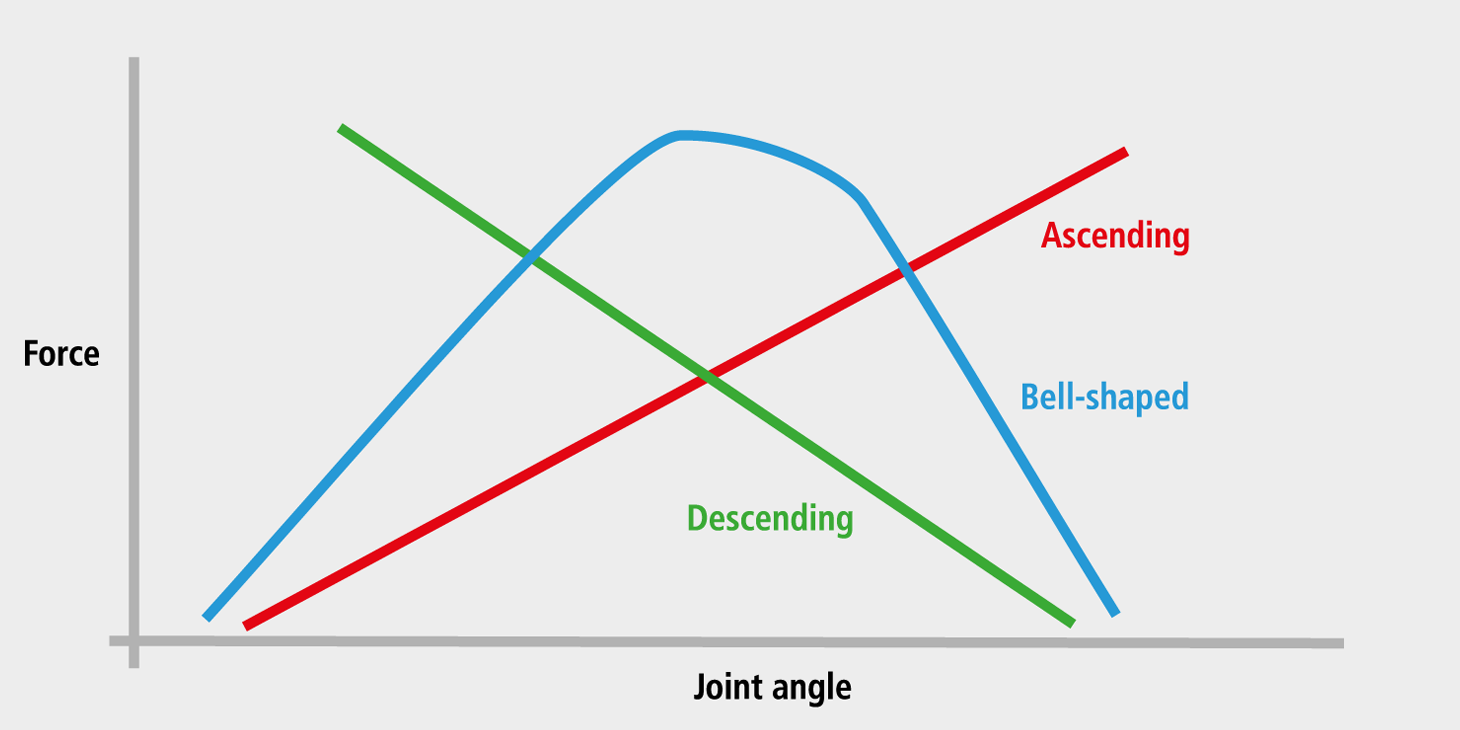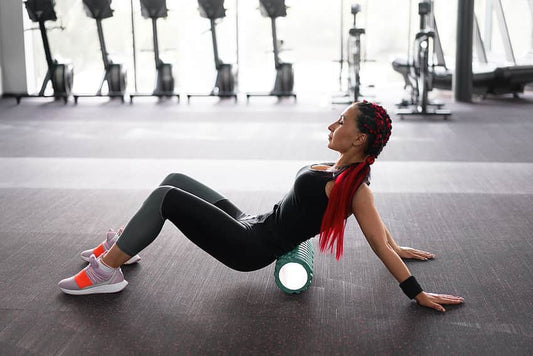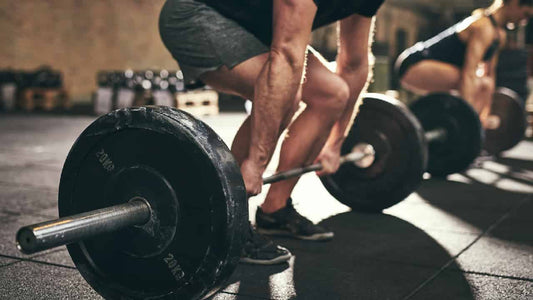Understanding Force-Velocity Curves. The science behind training for strength, power and explosive speed.
Athletic programming is an art form.
Ask any high-level coach and they’ll agree.
Taking established training concepts and developing them into an effective fitness or strength program takes years to hone. It requires flair, individuality and effective dynamic reasoning.
But the success of the program will always be underpinned by solid science. With a firm understanding of the fundamental principles.
In this article we’ll take you through the basics of strength and force curves. Discussing how they control movement and impact on your athletic performance during strength training.
Key points:
- Strength curves dictate how much force you can produce at different angles throughout a resistance-based exercise. These can be split into ascending, descending and bell-shaped (parabolic).
- The force-velocity curve dictates the relationship between the load you are lifting and the speed it can be moved.
- Understanding how strength and force curves work helps you plan effective exercise programs to improve power, strength and explosive speed.
Strength Curve Basics
Let’s talk curves. Strength curves.
So you’ve programmed your lifts and you’ve nailed your reps, sets and loads. But there could be one very important consideration you might not have factored. One that could have huge implications for program quality.
Strength curves.
Have you ever noticed how some exercises are easier at the beginning of the concentric phase – i.e. when the muscle is contracting. But get harder throughout the range of motion? Or that others are most difficult at the initiation stage, but easier once you get the bar moving?
Strength curves provide a mathematical representation of the potential force-producing characteristics during different phases of an exercise. In other words, they tell you how much force is needed to overcome the load on the bar.
Variable resistance training (VRT) is all about manipulating strength curves. And has been shown in some studies to be more effective than traditional strength training.
Strength curves tell you how much force is required at each point during a lift throughout the range of motion
No matter what exercise you choose, force characteristics can be categorized into one of three strength curves:

Ascending strength curve
Some exercises get progressively easier throughout the range of motion (ROM) and are at their absolute easiest towards extension or “lockout”.
For example, getting the bar off your chest during a bench press is the toughest point of the lift. Likewise, the squat is hardest when you’re digging deep to get out of ‘the hole’, but plain sailing as you move towards full hip extension.
An ascending strength curve is the reason you will see ‘gym bros’ around the world cheat. Only doing a half-squat, or not bringing the bar fully down to their chest when benching.
Sticking to the less challenging part of the lift means you can add more weight to the bar and avoid the toughest part. But you won’t get stronger where it counts.
Descending strength curve
Some exercises are easier at the beginning, becoming harder as you flex towards the end point during the concentric phase. Including pull-ups, pull-downs, rows and leg curls.
All of these are easier to get the bar moving and require much more force to reach full flexion. Again, this is a reason you will see gym bros performing half rep pull-ups or pull-downs, with bars reaching nowhere near chests.
Bell-shaped strength curve
Lastly there is the parabolic curve. Also call the concave or bell-shaped strength curve.
This applies to any lift where the concentric portion feels hardest in the middle and easier at the beginning or end. The best examples is the bicep curl - where you feel a “sticking point” as you hit 90 degrees at the elbow.
Here you’ll see our gym bro buddies cheat by thrusting their hips forward, as the bar reaches its toughest portion.

Why are strength curves important when programming training?
It’s possible to get bogged down in the deep science of exercise. But you don’t really need to, unless you’re a sport scientist.
However, knowing how strength curves work does allow you to plan more efficient training programs. You’ll be equipped to train to a higher standard too, as you’ll be able to quickly identify where you are weakest and how to fix the issue.
Developing force
Great athletes are strong. But more importantly they can develop force quickly and have explosive power that allows them to move fast.
Understanding which movements are important during your sport - and the way force and power need to be applied - helps you choose optimal training programs. Selecting the best exercises to mirror the force characteristics of the sport.
Using strength curve knowledge, you can plan concentric, isometric or eccentric-accentuated exercises. As well as plyometrics, load projection or other tools to help you get better in the right way.
Range of motion (ROM)
Research1 tells us that if your goal is to gain muscle hypertrophy, full range of motion training is superior. Increasing mechanical tension through a complete range promotes skeletal muscle growth.
And according to researchers, fits in with the idea of both strength curves and force-length theories. Because they directly influence the degree of tension applied to muscle fibers.
Length-tension relationship
Muscles increase strength at the length they are challenged. So if you train with a full ROM you can rest assured that you aren’t leaving segments of the movement untrained.
However, muscles also increase strength to a greater degree when they are most challenged.
For example, during a bicep curl – a bell-shaped strength curve - it’s hard at the beginning of the rep, hardest at the midpoint and easiest at the top. All due to levers and gravity.
So performing a bicep curl will lead to more strength in the lower two thirds of the lift (the start and the middle).
Additionally, the stretch-mediated hypertrophy effect suggests that training at long muscle lengths - such as when the bicep is stretched at the bottom of a curl - triggers not only active muscle components but passive ones too. Stimulating further growth.
This occurs predominantly during the eccentric phase of the lift. It can have regional results – because some fascicles will be stimulated more than others. And is very much based on the specific strength curve of an exercise.
Don’t think that partial range of motion training is a waste of time, though. By training within a specific range, you can manipulate your lifting to improve strength within a targeted area of ROM.
Also, if you’re a powerlifter who can’t get past a particular point during a deadlift. Or an athlete that loses force during a specific segment of a muscular action, training to improve sticking points can help you improve performance.

Force-velocity curve basics
There is a strength curve that dictates length-tension within muscles. Plus, a force-velocity curve that dictates how fast you can move the weight at varying loads.
The “F-V” curve is a graphical representation of the inverse relationship between force – that’s the load you are lifting. And velocity – that’s bar speed.
Similar to the strength curve, it is an important tool for athletes and coaches. Allowing maximal transfer from what happens in the gym to what happens on the field of play.
Think for a moment about: A, a heavy 1-RM hex bar deadlift and: B, a hex bar jump deadlift using a load of 60% 1-RM.
They have the same technique - up until the take-off obviously. But completely different speeds. To get that 1-RM you really have to grind. The bar will move slowly, not just when you initiate the lift but the whole way through to lock-out.
The jump on the other hand might start off slow(ish), but you’re soon able to accelerate the bar. Creating such power and speed that the momentum allows you to continue upwards, projecting the load with you as you jump in the air.
So why is one fast and the other not?
It’s all to do with the force-velocity relationship.
Force-velocity explained
F-V is a simple concept that suggests an inverse relationship between F and V. In other words, heavy stuff can only be moved slowly, whereas lighter stuff moves faster.
Force = mass x acceleration
Velocity = displacement/time
Power = force x velocity
The reason high force exercises move slowly is down to multiple motor unit recruitment in muscles. It takes time for muscle cross-bridges to be formed to create enough contractile force to actually lift the weight.
Henneman's size principle2 dictates that smaller, less forceful motor units activate first; with stronger ones recruited only when necessary.
Heavier loads can’t be lifted by smaller motor units because not enough total cross-bridges are formed. So there is a short time lag before you switch those bigger units on to generate sufficient mechanical tension to overcome the load.
On the other hand, lighter loads don’t rely on more forceful motor unit recruitment. Meaning that sufficient force can be applied earlier and higher velocities achieved at a faster and more explosive rate.

As you can see from the graph above, different points on the F-V curve represent training outcomes. If you’re an athlete whose sport relies only on maximal strength - a powerlifter for example - high force training is your focus. If you need speed, higher velocities are more suitable.
Of course, many sports rely on strength, power and speed with demands that lie along the full F-V curve. And because power is dependent on both force and velocity, improving your strength and/or speed will have a positive effect on power output.
This is termed dynamic correspondence in strength training literature.
Maximal strength:
Emphasis: Force production
Velocity: Slow
Load: Heavy (90-100% 1-RM)
Power:
Emphasis: Optimal balance between force and velocity to maximize power output
Velocity: Moderately fast
Load: Moderately heavy (30-80% 1-RM)
Speed:
Emphasis: Peak velocity
Velocity: Fast
Load: Light (~30 1-RM)
Using a periodized training approach with focus on each element over time may help to optimize results.
Research shows us that transferability from the gym to performance is dependent on velocity3 therefore you can’t expect to lift heavy in the gym all the time and somehow optimize speed on the track.
Note: Intent to move the bar as fast as possible is also important at heavier loads.
Knowledge of the F-V curve and transfer effect is why velocity based training (VBT) is becoming so popular as a training prescription tool.
By only training one part of the F-V you’ll only improve that element of your performance. This is why many athletes train on strength for a period of time, then focus on power or velocity. That way, they progress all important aspects of athleticism.
Takeaway…
Successful training depends on effective athletic programming.
Developing an effective program requires an understanding of the strength and F-V curves. And how each section impacts on your training.
Implementing these fundamental sports science mechanisms is key to long-term development and performance.
Put them into practice in your training and you’ll get the power, strength and explosive speed you want.















